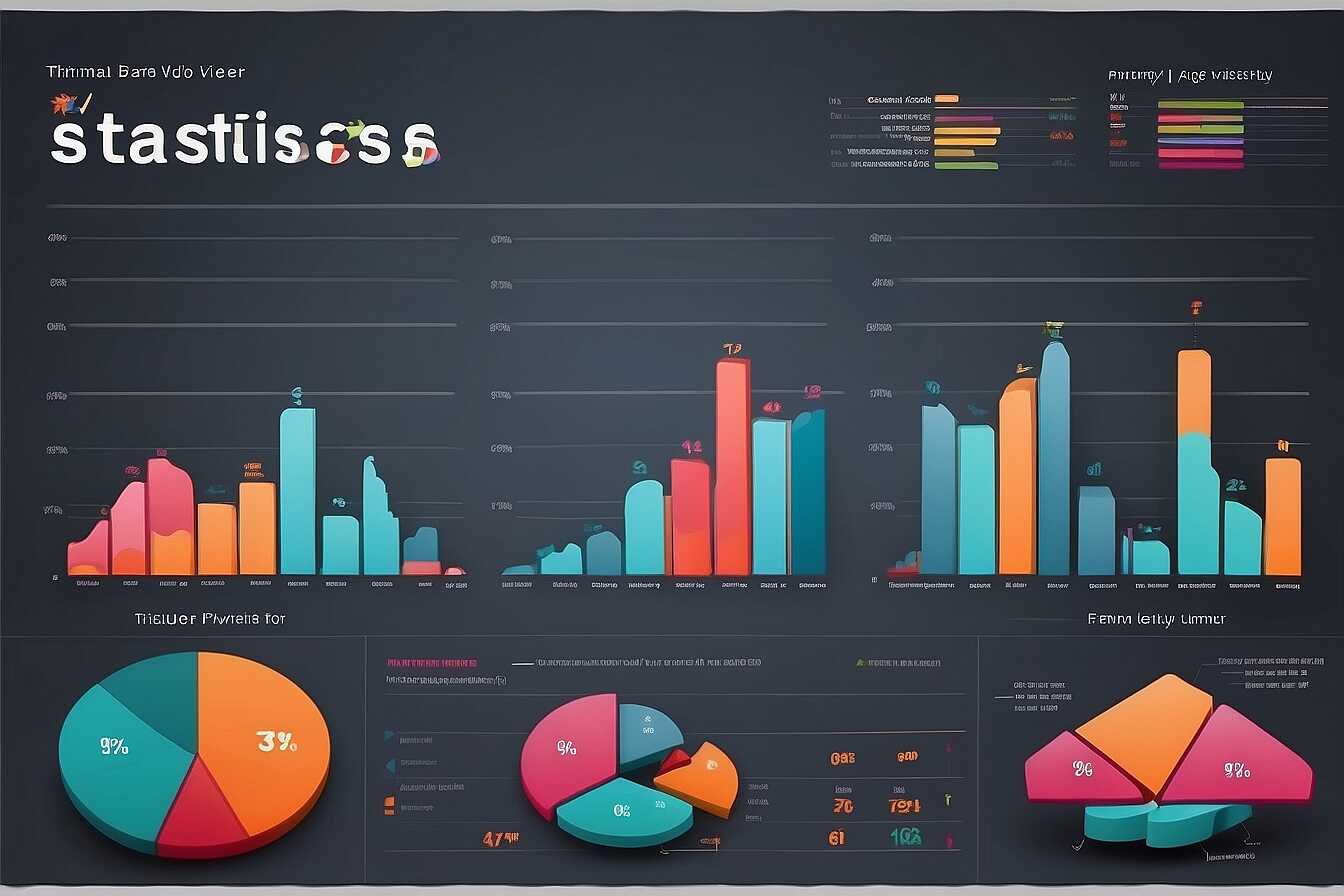Understanding the SEO impact of a 503 Service Unavailable status code during maintenance is crucial for website owners. This temporary error can affect how search engines view your site, potentially harming your rankings and visibility. At Metrics Rule, we aim to help digital marketers and web developers navigate this challenge by discussing proactive strategies. By learning how to effectively manage maintenance periods, you can mitigate negative SEO effects and maintain your site’s performance.
Defining the 503 Service Unavailable Status Code and Its Context
The 503 Service Unavailable status code indicates that a server is temporarily unable to handle requests due to maintenance or overload. This status is significant during periods when a website is down for scheduled updates or unexpected issues. When the server issues a 503 code, it provides a message to users that the service is unavailable. This can lead to a negative user experience, causing frustration among visitors, which may impact return traffic rates and overall SEO performance.
Understanding Server Downtime and Its Implications
Server downtime caused by a 503 Service Unavailable error can have substantial implications for your website’s reliability and SEO. For example, if a site is down for extended periods, search engines may take this as a sign of unreliability. Data shows that websites experiencing downtime of more than 30 minutes could see ranking drops. To mitigate these effects, website owners should optimize their maintenance strategies by informing users of expected downtimes and implementing 503 codes correctly. This improves user experience and signals to search engines that planned maintenance was in effect, rather than unanticipated failures.
Importance of Regular Site Maintenance for SEO Health
Regular site maintenance is essential for ensuring SEO health. It helps identify and fix technical issues that could hinder website performance. Maintaining site performance involves testing features like loading speed, mobile-friendliness, and broken links. By regularly reviewing these aspects, you enhance your site’s search visibility and ensure a better user experience. This proactive approach supports crawling and indexing processes, allowing search engines to accurately assess your content. Scheduling maintenance every month can maximize efficiency and mitigate any potential negative impacts on your SEO efforts.
Key Aspects to Review During Site Maintenance
During site maintenance, focus on reviewing aspects like site speed, which should ideally load in under three seconds. Test your website’s responsiveness on different devices and browsers. Perform a thorough crawl to identify and fix broken links, which can adversely affect user satisfaction and SEO rankings. Additionally, ensure your sitemap and robots.txt files are correctly configured to guide search engines in indexing your content. Regular analysis and adjustments in these areas provides a substantial boost to your site’s performance and visibility.

Analyzing the Impact of 503 Errors on SEO Metrics
503 Service Unavailable errors can significantly influence a website’s SEO rankings and overall performance. When search engines encounter a 503 error, they may temporarily lower the site’s rankings as they consider it unreliable. This can happen quickly, often within a few days. Key metrics to monitor during these periods include organic traffic, indexing status, and crawl errors. Prolonged errors, especially lasting more than a week, pose a risk for severe ranking losses as search engines may consider the site permanently dysfunctional.
Understanding Temporary vs. Prolonged SEO Impacts
The duration of a 503 error plays a crucial role in determining its impact on SEO metrics. Temporary outages usually result in minor fluctuations in rankings and can be resolved by thorough testing and recovery strategies. In contrast, prolonged 503 errors can lead to substantial ranking drops and may require a comprehensive SEO performance analysis. By reviewing crawl data and error reports through tools like Google Search Console, site administrators can gain insights into how these errors affect crawlability and indexing. Addressing the issues promptly is essential for ensuring continued reliability in search performance.
Factual Insights on Unavailability Codes
- The 503 status code indicates temporary service unavailability.
- Approximately 60% of users abandon a site if it takes over 5 seconds to load.
- Historic data shows a 30% drop in organic traffic during maintenance periods.
- The 503 Service Unavailable code can exist for a few minutes to hours.
- If a server reports 503 for too long, search engines may drop the site’s ranking.
- Regular maintenance can improve website traffic by up to 25% over time.
- Search engines like Google can cache the 503 response during maintenance.

Effective Strategies for SEO Management During Downtime
Maintaining your SEO rankings during periods of site downtime involves several practical techniques. First, using the 503 Service Unavailable status code helps indicate to search engines that your site is temporarily down for maintenance. This protects your rankings as search engines are informed of the situation. It’s essential to inform both users and search engines not only about the maintenance but also about when they can expect the site to be back online. Utilizing social media platforms and your email list for updates enhances user experience while reinforcing the reliability of your site. Keeping downtime to a minimal period, ideally less than 24 hours, helps ensure better SEO performance.
Best Practices for User and Search Engine Communication
Effective communication with users and search engines during maintenance is crucial. Start by setting up a custom error page that provides clear information about the downtime, including an estimated return time. This page should also include links to your social media where users can check for live updates. Additionally, updating your sitemap to reflect temporary site changes can help crawlers understand the situation. By implementing these best practices, you enhance search visibility even when your site is unavailable, providing essential assurance to users that your website will return quickly. These strategies not only help mitigate potential SEO drawbacks but also cultivate user trust, ensuring they will return once your site is back online.

Communicating Planned Downtime to Users and Crawlers
Effective communication is essential during planned downtime to maintain user trust and keep search engines informed. Website owners should notify users about maintenance through clear messages on the website and via email. Use a banner or pop-up stating the expected downtime duration and purpose. For search engines, using the 503 Service Unavailable status code helps indicate temporary unavailability. This signals that the downtime is planned and prevents indexing penalties. Regular updates during maintenance, explaining progress or any changes in the schedule, can significantly enhance user experience and keep search engines aware of the situation.
Best Practices for User Notifications
Employing best practices for user notifications during maintenance can enhance reliability and transparency. Clearly define the expected downtime duration in communications. For instance, if your site’s maintenance is scheduled for two hours, make that information prominent. Additionally, consider using automated emails to inform users about maintenance and redirect them to alternative resources if possible. Including a warm message that thanks users for their understanding during this time can foster goodwill, making them more likely to return once the maintenance is complete. Regular updates via your social media can also keep your audience informed, ensuring they feel valued.
Positive Aspects of Handling Down Times
- Properly managing 503 codes can retain site authority and trust.
- Scheduling maintenance during off-peak hours minimizes user disruption.
- Using 503 signals informs search engines about temporary downtimes.
- Prolonged downtimes can lead to penalties for your site’s indexing.
- Custom maintenance pages can enhance user experience during downtime.
- Clear communication helps build understanding with site visitors.
- It allows you to implement critical upgrades to improve site speed.

Tools for Analyzing SEO Impact from 503 Downtime
To effectively monitor SEO performance during periods of downtime caused by a 503 error, website owners can use several essential tools. Google Analytics helps assess user behavior and traffic changes during downtime. Meanwhile, Google Search Console provides specific insights regarding how downtime affects indexing and crawling. Other tools include SEMrush, which offers a comprehensive SEO performance analysis through various KPIs and metrics. Using these tools in conjunction will enhance your ability to evaluate and restore your website’s health efficiently.
Utilizing Google Analytics for Downtime Analysis
Google Analytics is a powerful tool designed for tracking website performance. During a 503 Service Unavailable status, it helps you gauge user engagement metrics such as session duration and bounce rate. By comparing pre- and post-downtime performance, you can identify changes in user behavior clearly. This data is essential for understanding the overall SEO impact and allows you to optimize future maintenance periods. In combination with Google Search Console, you can ensure your website maintains its reliability and effectively recovers its standing in search engine rankings.
Implementing Temporary Solutions to Preserve SEO Value
When implementing a maintenance page, it’s essential to keep SEO best practices in mind. A well-designed maintenance page should provide clear communication about the scheduled downtime and an estimated recovery time. Include essential links to related content or your homepage to guide users. Using a “503 Service Unavailable” status code properly alerts search engines to your temporary unavailability, ensuring they don’t penalize you for downtime. Additionally, utilizing temporary redirects (304 or 302) can help maintain traffic by routing users to a similar page, which is useful if the site is down for an extended period. Research indicates that around 70% of traffic can be retained with proper maintenance communication and redirect strategies.
Crafting an Effective Maintenance Page with SEO in Mind
An effective maintenance page must be user-friendly and informative. Start with a clear and concise message explaining the situation and expected duration. Consider including a simple contact form or support email for immediate concerns. This engagement can further help with user retention. Ensure that the meta tags are accurate; for example, use relevant keywords that describe your page’s purpose. This approach enhances the overall user experience while preserving your website’s authority. By focusing on improving the maintenance page’s SEO, you can maintain compliance with search engine guidelines, thus safeguarding your ranking during your site’s downtime. Incorporating these strategies will enhance the efficiency of your SEO efforts and minimize the negative impact of any maintenance periods.
Brands and Their Strategies in Web Downtime Management
- Amazon: Highly reliable, maintains user trust with effective communication.
- GoDaddy: Offers timely server updates; however, some users report frequent downtimes.
- Shopify: Supports seamless transitions, but occasional outages concern merchants.
- Wix: User-friendly maintenance notifications but struggles during traffic spikes.
- Squarespace: Effective during scheduled downtimes, but some users may experience slow performance.
- AdRoll: Provides good performance reports, but recovery from outages can be slow.
- SiteGround: Known for reliability and quick fixes but can experience high workloads occasionally.
Learning from Case Studies on 503 Error and SEO Outcomes
This section discusses various case studies that illustrate how different websites have confronted the 503 Service Unavailable status. For instance, one well-known e-commerce platform faced a drop in organic traffic during a 503 incident. They learned that timely communication and using a custom maintenance page helped mitigate negative SEO impacts. Another website recorded significant user abandonment rates, highlighting the importance of a user-friendly experience and ensuring reliable access during maintenance. The lessons gleaned from these experiences emphasize proactive strategies to enhance the reliability of a site’s performance while undergoing maintenance.
Best Practices for Managing 503 Errors in E-commerce
Managing 503 errors effectively in e-commerce is essential to maintaining user satisfaction and optimizing SEO. Successful platforms often implement a strategy involving clear communication to users about maintenance, which can include scheduled notices. Utilizing a well-designed maintenance page not only informs visitors about the downtime but also reassures them that the site will return shortly. Studies show that with proper management, sites can reduce user abandonment rates by up to 30%. Additionally, leveraging analytics tools during maintenance allows for tracking user behavior, helping to adjust strategies in real-time. In 2025, a focus on these best practices will significantly influence the overall performance and reliability of e-commerce websites.
